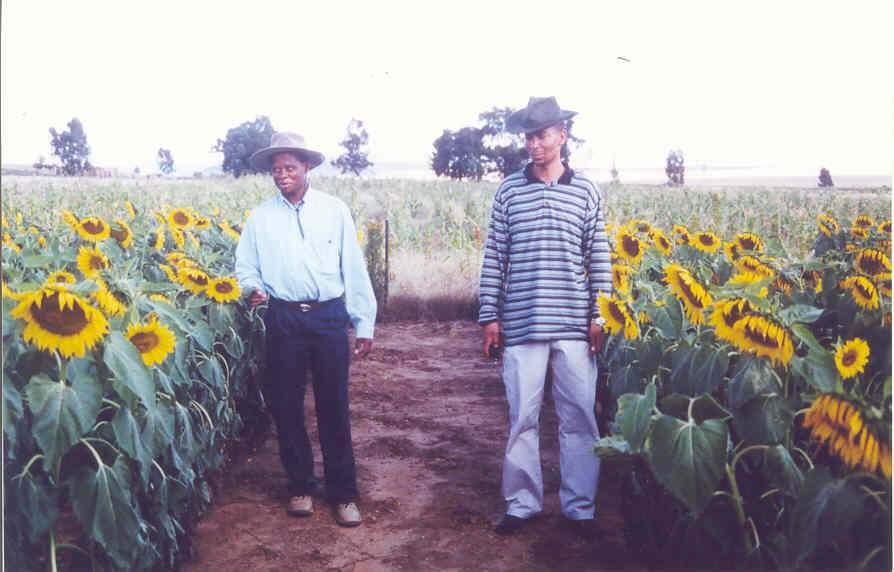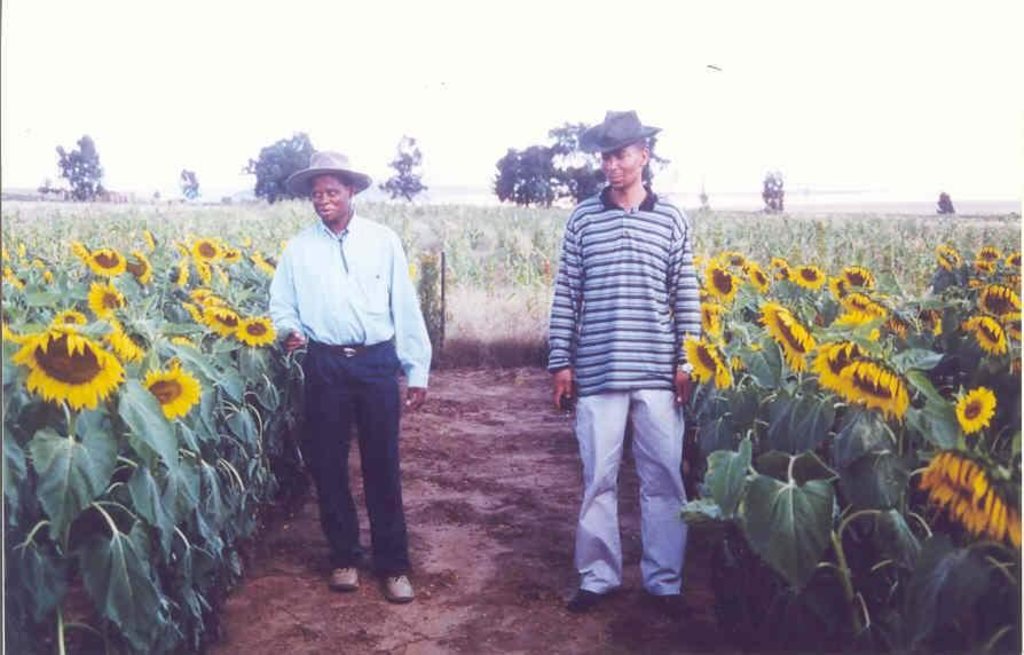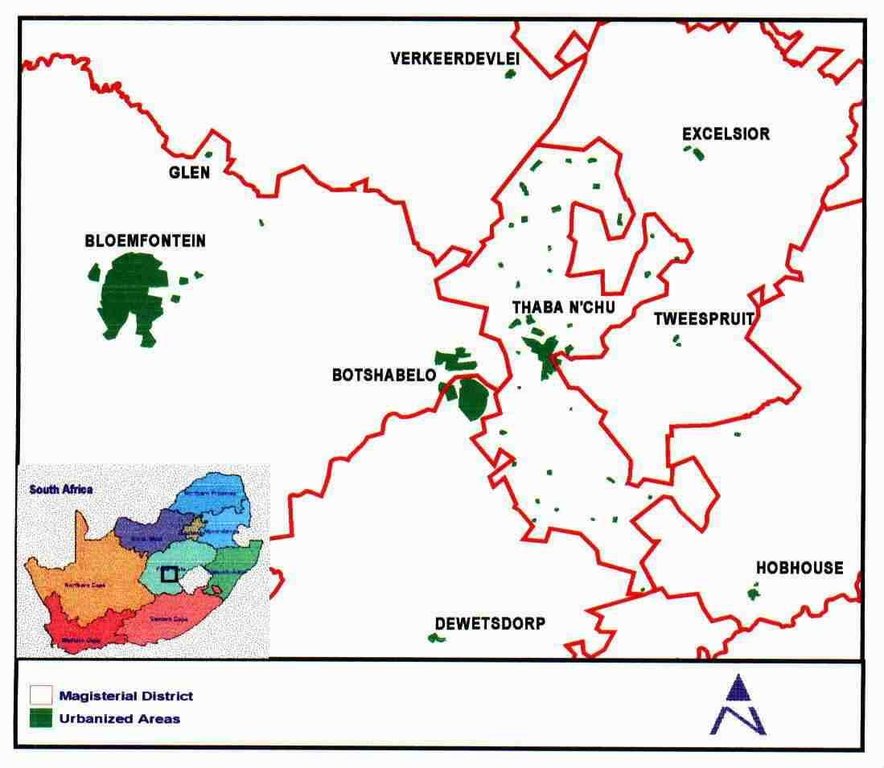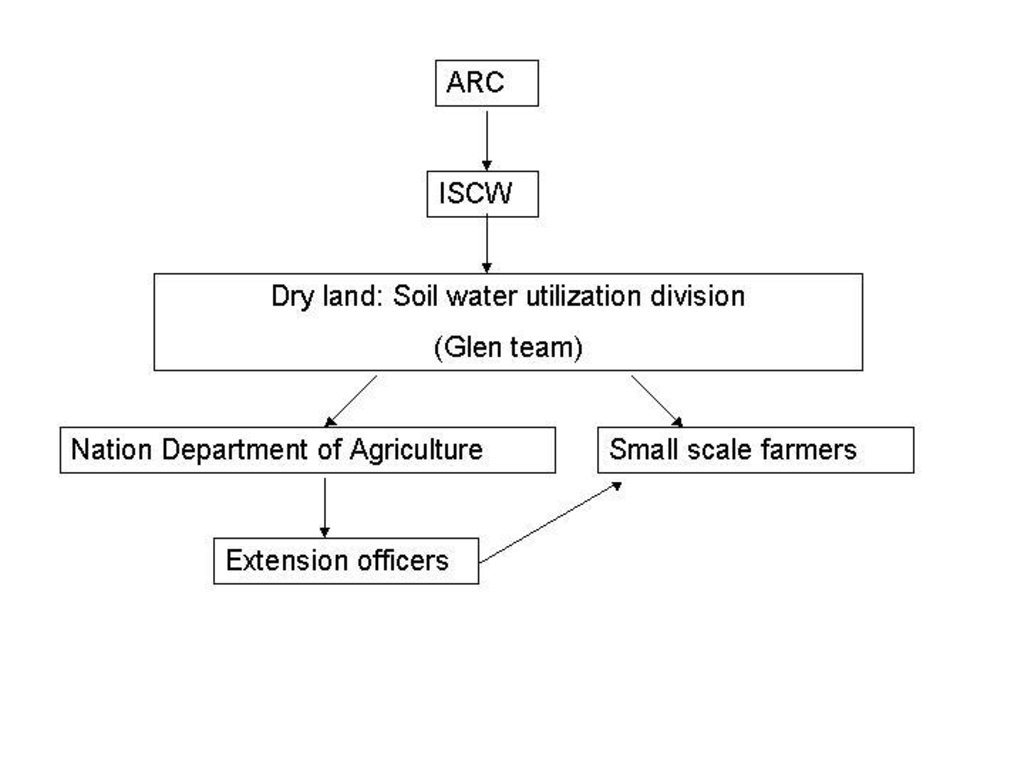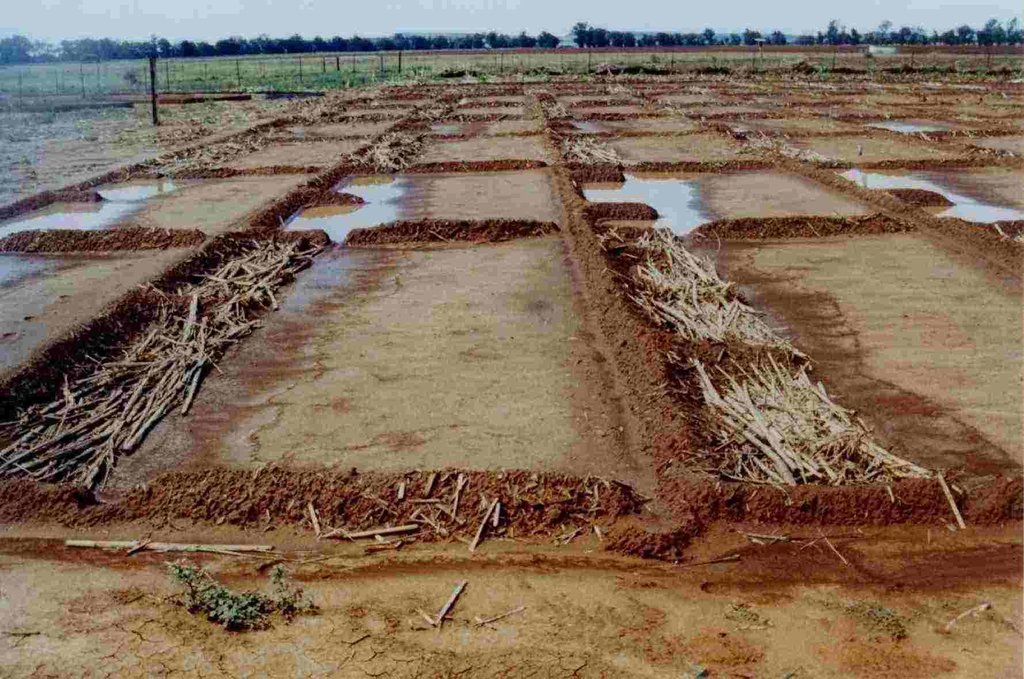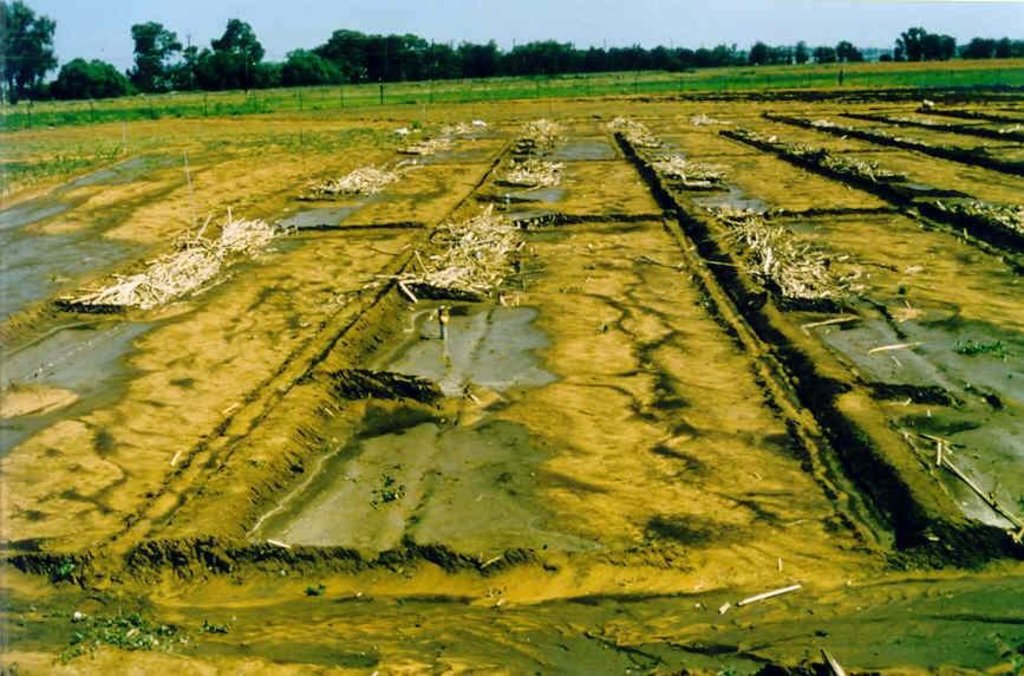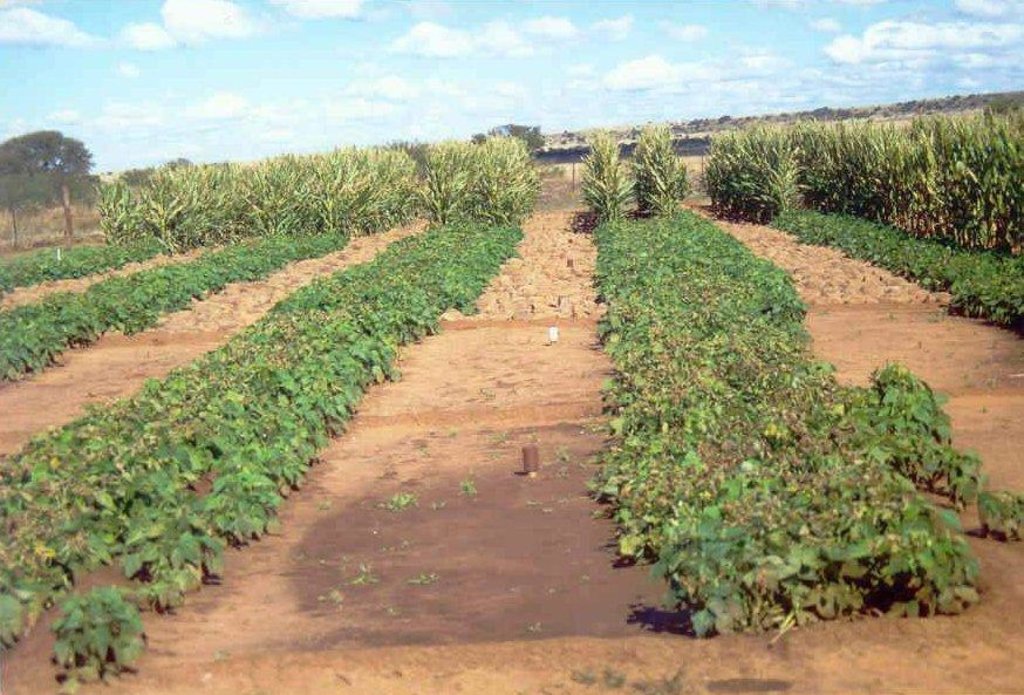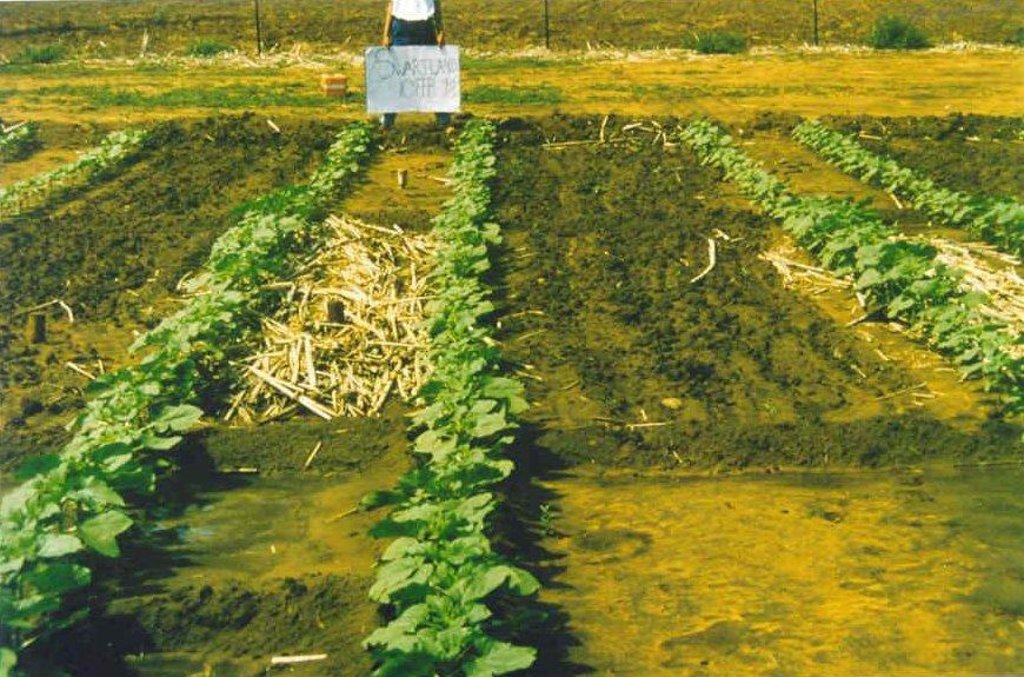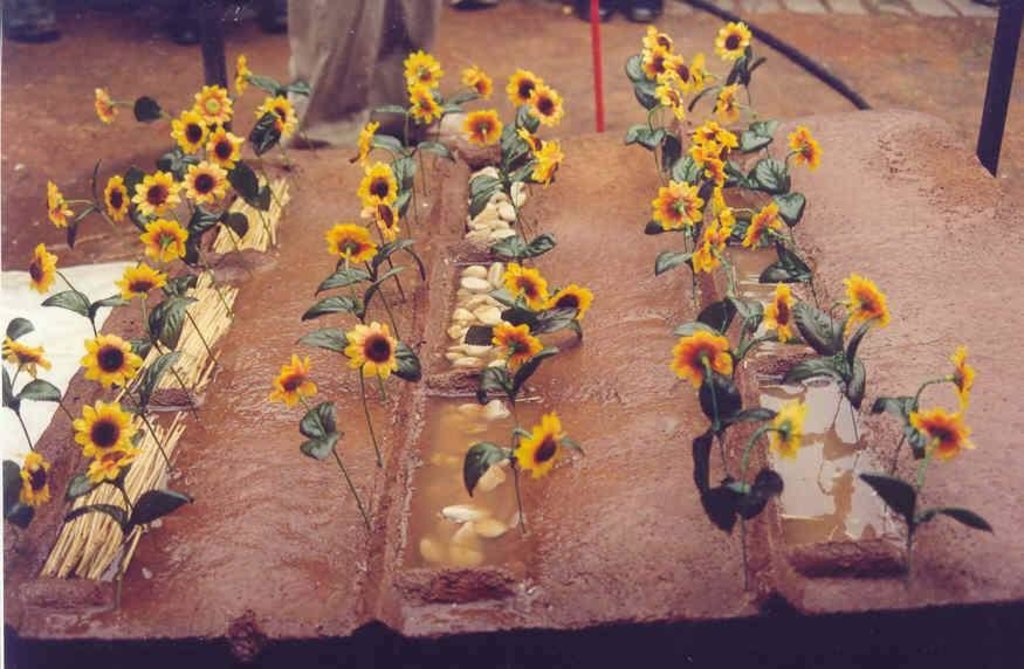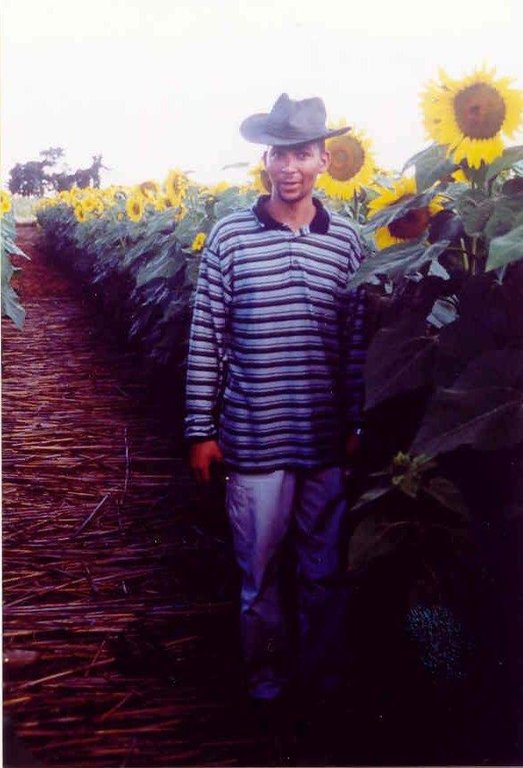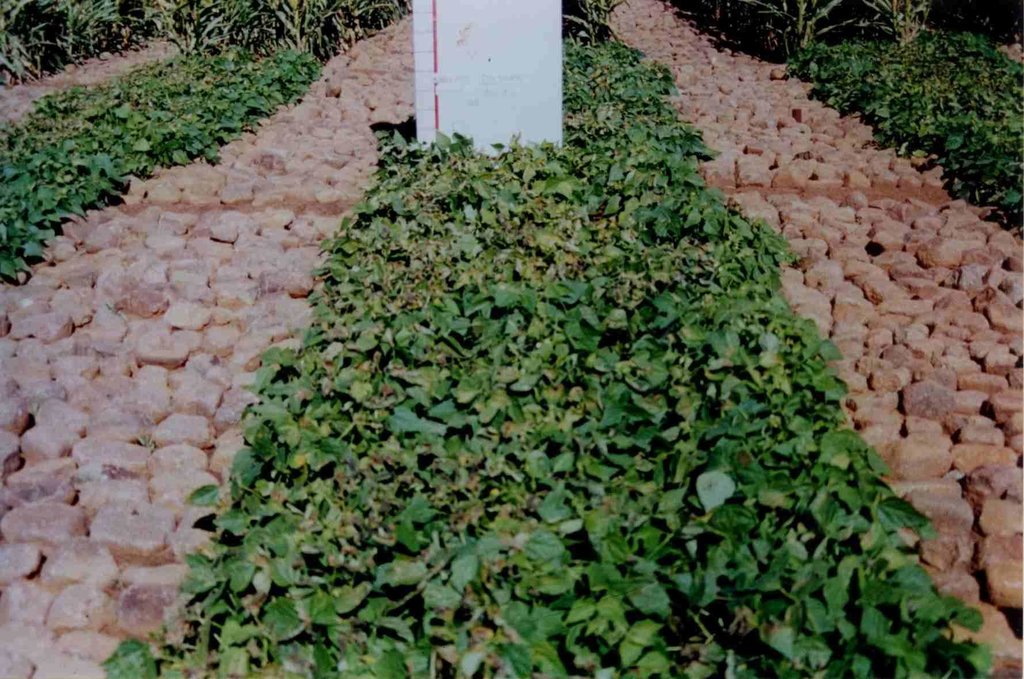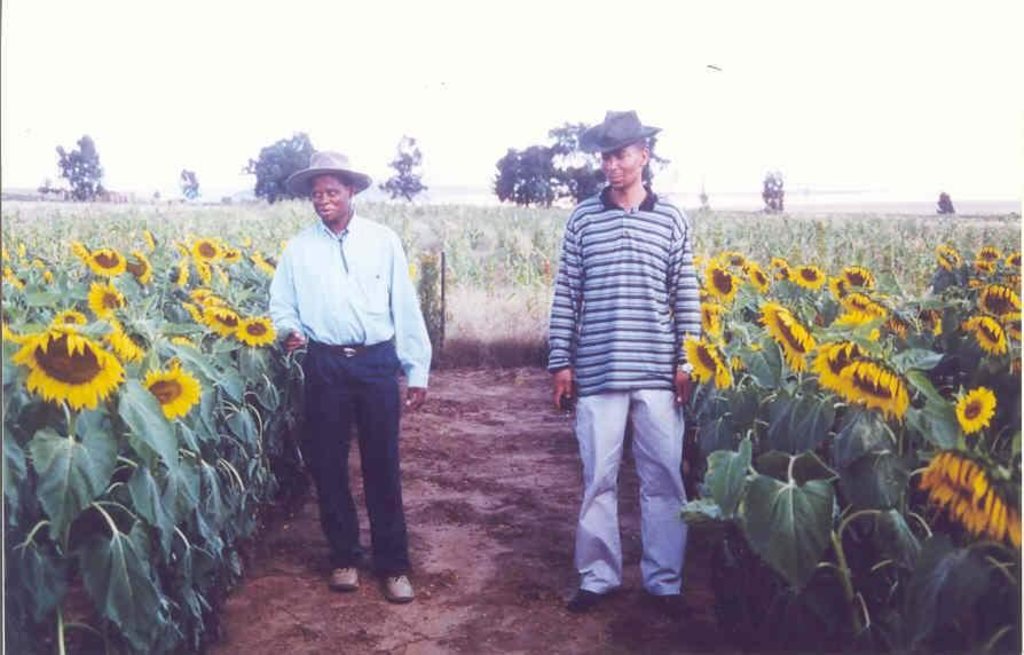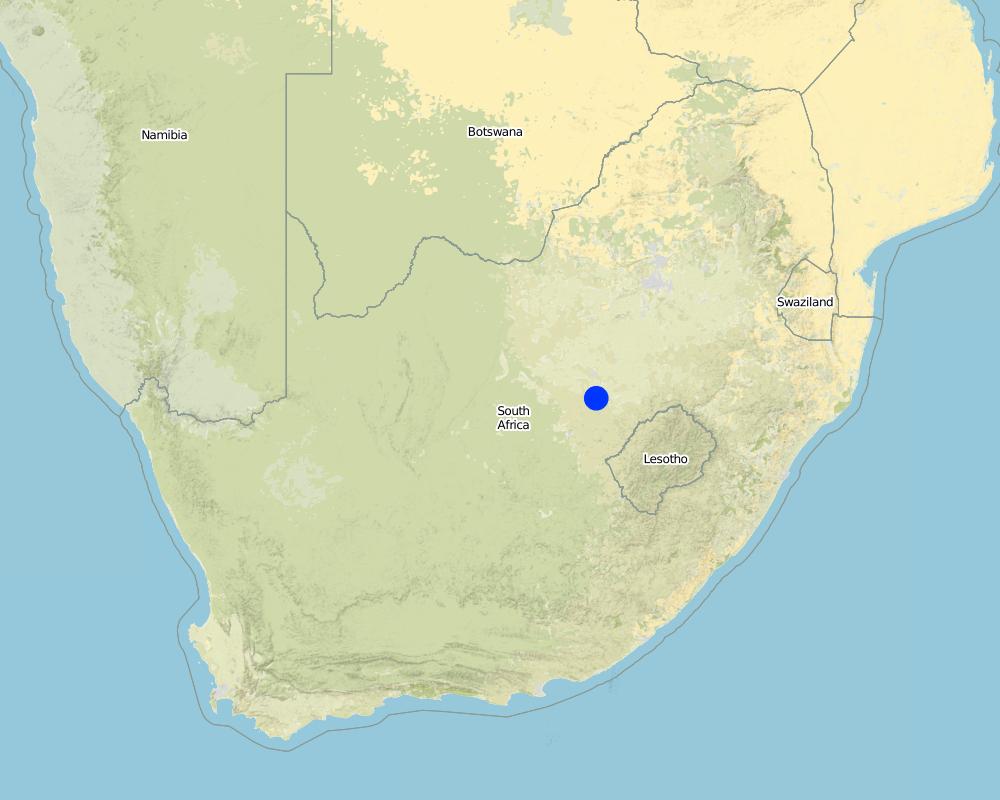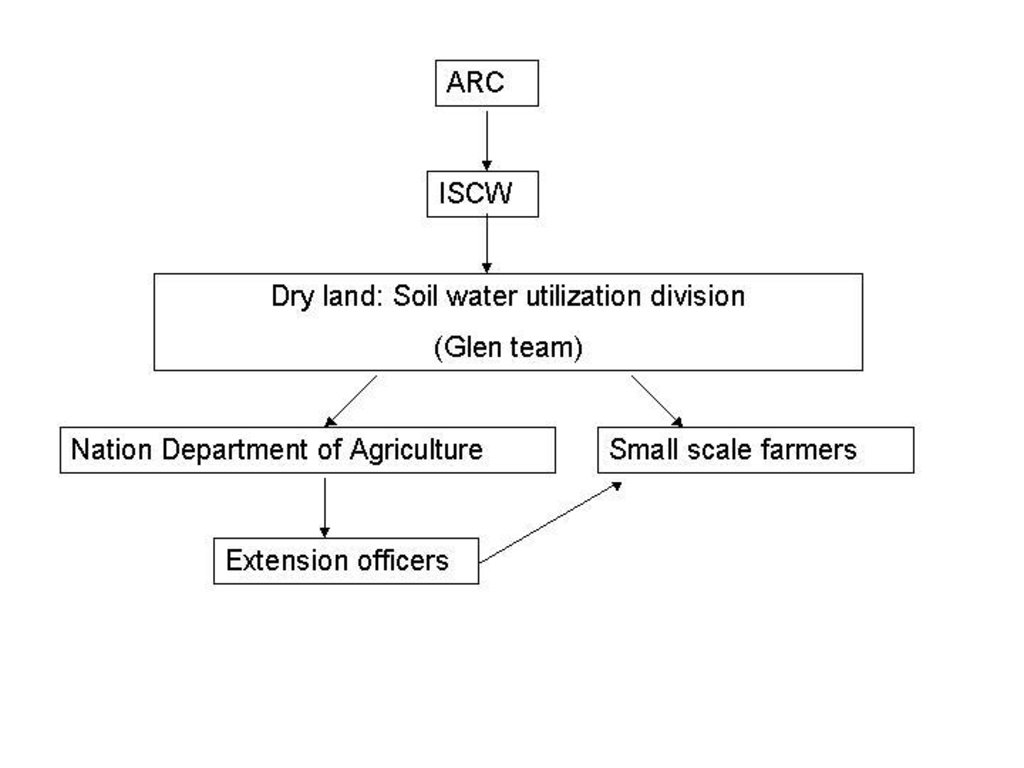Water Harvesting & Basin tillage (WHB) through demonstrations [South Africa]
- Creation:
- Update:
- Compiler: Cobus Botha
- Editor: –
- Reviewer: Fabian Ottiger
approaches_2336 - South Africa
View sections
Expand all Collapse all1. General information
1.2 Contact details of resource persons and institutions involved in the assessment and documentation of the Approach
1.3 Conditions regarding the use of data documented through WOCAT
The compiler and key resource person(s) accept the conditions regarding the use of data documented through WOCAT:
Yes
1.4 Reference(s) to Questionnaire(s) on SLM Technologies
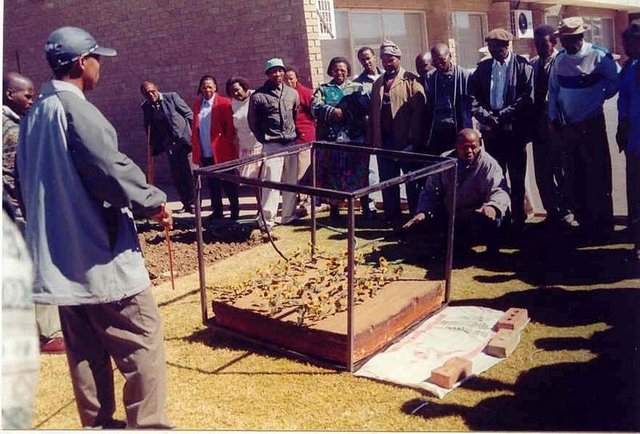
Water Harvesting & Basin tillage [South Africa]
In-field water harvesting technique
- Compiler: Cobus Botha
2. Description of the SLM Approach
2.1 Short description of the Approach
Optimising rainwater use, reduce runoff by use of basins and reduce evaporation losses by applying a mulch (stone/reeds) on the runoff strip and in the basins.
2.2 Detailed description of the Approach
Detailed description of the Approach:
Aims / objectives: Given the marginal soils of a clayey nature and/or slope terrain, coupled with erratic rainfall events, the technology aims to harvest available rain water and prevent runoff and soil loss. At present, PRAs are conducted in target areas and so far, people are eager to adopt the technology. The aim is to train them and assist in constructing the basins so that after a year they will be able to take over the project entirely even though the team will still be around to provide advice should the need arise.
2.3 Photos of the Approach
2.5 Country/ region/ locations where the Approach has been applied
Country:
South Africa
Region/ State/ Province:
Free State
Map
×2.6 Dates of initiation and termination of the Approach
Indicate year of initiation:
1996
Year of termination (if Approach is no longer applied):
2002
2.7 Type of Approach
- project/ programme based
2.8 Main aims/ objectives of the Approach
The Approach focused on SLM only (n/a)
*To make optimal use of pre-plant water that collects in basins from summer rains that fall during the fallow period. Saved water very beneficial during the reproductive growth of plants which often occurs when there is no rain.
*Prevention of soil and water loss through water erosion and runoff by the use of basins.
*Restriction of evaporation by the use of mulch. Straw is mostly preferred for its biodegradability although stone in comparative percentage cover is more effective.
The SLM Approach addressed the following problems: The target areas are marginal for crop production because of relatively low and erratic rainfall and dominantly clay soils on which the precipitation use efficiency is low because of high losses due to runoff and evaporation form the soul surface.
2.9 Conditions enabling or hindering implementation of the Technology/ Technologies applied under the Approach
social/ cultural/ religious norms and values
- hindering
People are resistant to change. Had to convince that they can get better yields with new technique.
Treatment through the SLM Approach: Interacting with people as much as possible and comparing yields on farmers days after harvest.
availability/ access to financial resources and services
- hindering
Most can't afford inputs and to hire labour for construction of basins.
Treatment through the SLM Approach: Team will ask for discounts from providers and encourage team work amongst community.
legal framework (land tenure, land and water use rights)
- enabling
The existing land ownership, land use rights / water rights greatly helped the approach implementation: Land owners have little deeds and no law inhibits them from actively participating in the project.
3. Participation and roles of stakeholders involved
3.1 Stakeholders involved in the Approach and their roles
- local land users/ local communities
Land owners and local chiefs. Approach can only be implemented with their acceptance and approval. Specific ethnic groups: Black, resource poor farmers
Women tend to be submissive and docile. They look up to the men for decision making.
- SLM specialists/ agricultural advisers
- national government (planners, decision-makers)
- international organization
ARC - ISCW
3.2 Involvement of local land users/ local communities in the different phases of the Approach
| Involvement of local land users/ local communities | Specify who was involved and describe activities | |
|---|---|---|
| initiation/ motivation | none | rapid/participatory rural appraisal |
| planning | none | |
| implementation | passive | casual labour |
| monitoring/ evaluation | interactive | |
| Research | none | on-farm; On-station experiments are conducted at Glen to evaluate different SWC techniques. The new technology is transferred by means of on-farm demonstration plots and information days. |
3.3 Flow chart (if available)
3.4 Decision-making on the selection of SLM Technology/ Technologies
Specify who decided on the selection of the Technology/ Technologies to be implemented:
- SLM specialists alone
Explain:
land user driven (bottom-up). Realisation of poverty.
Decisions on the method of implementing the SLM Technology were made by mainly by land users supported by SLM specialists. land user driven (bottom-up). The need of land users to alleviate poverty.
4. Technical support, capacity building, and knowledge management
4.1 Capacity building/ training
Was training provided to land users/ other stakeholders?
Yes
Specify who was trained:
- land users
- extensionists/trainers
Form of training:
- demonstration areas
- public meetings
Subjects covered:
Construction of basins; better understanding of the system in simple terms; the concept of infiltration, evapotranspiration; erosion and runoff.
4.2 Advisory service
Do land users have access to an advisory service?
Yes
Specify whether advisory service is provided:
- at permanent centres
Describe/ comments:
NDA Extension; Key elements: Assistance in technology transfer, Organising public meetings, Establishing & link between specialists and land users;
1) Advisory service was carried out through: government's existing extension system. Extension staff: mainly government employees
2) Target groups for extension: land users; Activities: Technology transfer
Advisory service is quite adequate to ensure the continuation of land conservation activities; With a little persuasion, they assist completely.
4.3 Institution strengthening (organizational development)
Have institutions been established or strengthened through the Approach?
- yes, a little
Specify the level(s) at which institutions have been strengthened or established:
- local
Specify type of support:
- capacity building/ training
4.4 Monitoring and evaluation
Is monitoring and evaluation part of the Approach?
Yes
Comments:
bio-physical aspects were regular monitored through measurements
socio-cultural aspects were None monitored through measurements
economic / production aspects were None monitored through measurements
There were few changes in the Approach as a result of monitoring and evaluation: An organic mulch can be placed in the basins and on the runoff strip to stop evaporation losses. However cattle are allowed to graze in the land after the crop has been harvested. There after there is almost no organic mulch left to cover the soil surface. Stones were then suggested as an alternative mulch.
4.5 Research
Was research part of the Approach?
Yes
Specify topics:
- sociology
- economics / marketing
- technology
Give further details and indicate who did the research:
Research was carried out both on station and on-farm
5. Financing and external material support
5.1 Annual budget for the SLM component of the Approach
If precise annual budget is not known, indicate range:
- 100,000-1,000,000
Comments (e.g. main sources of funding/ major donors):
Approach costs were met by the following donors: national non-government (Water Research Commission): 100.0%
5.2 Financial/ material support provided to land users
Did land users receive financial/ material support for implementing the Technology/ Technologies?
Yes
5.3 Subsidies for specific inputs (including labour)
- equipment
| Specify which inputs were subsidised | To which extent | Specify subsidies |
|---|---|---|
| machinery | fully financed | |
| tools | fully financed | |
- agricultural
| Specify which inputs were subsidised | To which extent | Specify subsidies |
|---|---|---|
| seeds | fully financed | |
| fertilizers | fully financed | |
| Biocides | fully financed | |
If labour by land users was a substantial input, was it:
- paid in cash
6. Impact analysis and concluding statements
6.1 Impacts of the Approach
Did the Approach help land users to implement and maintain SLM Technologies?
- No
- Yes, little
- Yes, moderately
- Yes, greatly
N/A N/A
Did other land users / projects adopt the Approach?
- No
- Yes, little
- Yes, moderately
- Yes, greatly
Team about to start a food security project adopting the WHB.
6.3 Sustainability of Approach activities
Can the land users sustain what has been implemented through the Approach (without external support)?
- yes
6.4 Strengths/ advantages of the Approach
| Strengths/ advantages/ opportunities in the land user’s view |
|---|
| Produced higher yields. |
| Strengths/ advantages/ opportunities in the compiler’s or other key resource person’s view |
|---|
| Success of the WHB technique depends on suppressing water losses by runoff (R) and evaporation from the soil surface (Es). Measurements show that R has been reduced to zero and that Es has been reduced considerable, but still remains a serious avenue for water loss. (How to sustain/ enhance this strength: Future experimentation needs to focus on suppressing Es by any possible means.) |
| The WHB treatment gives considerably better yields than the conventional treatment. (How to sustain/ enhance this strength: Results from more seasons are needed to quantify the extent of this difference in a reliable way.) |
| Save on cultivation costs since no-till is employed. |
| The WHB technique is ell suited for use on very small pots, and even in townships. Many people in semi-arid areas could be usefully employed if this technique was widely adapted, and food security could be increased at the same time. (How to sustain/ enhance this strength: Extension work in this connection by the PSDA needs to be encourage.) |
| Soil loss from the land as a whole is zero. This is an important advantage over the conventional tillage in terms of sustainability. |
6.5 Weaknesses/ disadvantages of the Approach and ways of overcoming them
| Weaknesses/ disadvantages/ risks in the land user’s view | How can they be overcome? |
|---|---|
| It is labour intensive to initially construct the basins, by hand. |
| Weaknesses/ disadvantages/ risks in the compiler’s or other key resource person’s view | How can they be overcome? |
|---|---|
| There is some soil movement form the runoff area into the basins, ad basins may silt up over time. | |
| Huge storms may overflow and break basin walls; and basins may need some maintenance. | |
| In the case of small rainfall events all the water may not reach the basins. | |
| Organic mulch may act as a sponge and absorb some of the rainwater. |
7. References and links
7.1 Methods/ sources of information
- field visits, field surveys
- interviews with land users
7.2 References to available publications
Title, author, year, ISBN:
Optimising rainfall use efficiency for developing farmers with limited access to irrigation water, WRC Report No 878/1/00. Hensley, M; Botha, JJ; Anderson, JJ; Van Staden, PP & Du Toit, A. 2000Video 'In field Rainwater harvesting (1) Basic concepts to ensure agronomic and conservation sustainability in small scale farming'.The video illustrates the existing results obtained to enhance agronomic and conservation sustainability.
Available from where? Costs?
R120. Leon van Rensburg, P/B X01, Glen, 9360. Debruint@glen.agric.za
Title, author, year, ISBN:
Optimising rainfall use efficiency for developing farmers with limited access to irrigation water, WRC Report No 878/1/00. Hensley, M; Botha, JJ; Anderson, JJ; Van Staden, PP & Du Toit, A. 2000
Title, author, year, ISBN:
Video 'In field Rainwater harvesting (1) Basic concepts to ensure agronomic and conservation sustainability in small scale farming'.
Links and modules
Expand all Collapse allLinks

Water Harvesting & Basin tillage [South Africa]
In-field water harvesting technique
- Compiler: Cobus Botha
Modules
No modules


